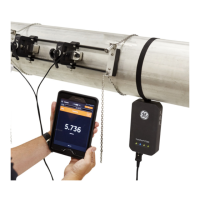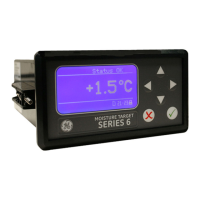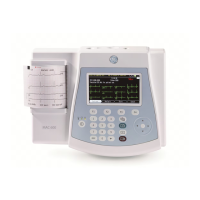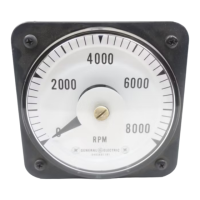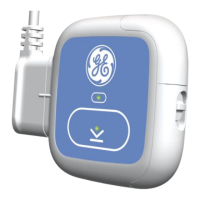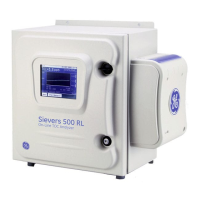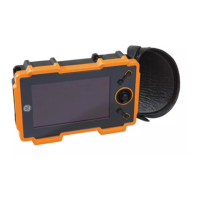August 2008
3-22 Operation
The Communications
Option (cont.)
3. Scroll to the Node ID prompt and press [ENTER] to open the text
box. Use the numeric keys to enter a node identification number
(must be an integer between 1 and 240) for your PT878 and press
[ENTER] to confirm the entry.
IMPORTANT: Do NOT change the default Node ID unless instructed
to do so by GE Sensing.
4. Scroll to the Comm Interface prompt and use the [W] and [X]
keys to select either the IrDA (Infrared Data Association) option
or the IR232 (virtual interface) option. Press [ENTER] to confirm
your selection.
Note: You must choose the IrDA option when using an IR printer or
a file transfer application such as QuickBeam.
IMPORTANT: If you select the IR232 option above, you must use the
default values in the next four steps.
5. Scroll to the Baud Rate prompt and press [ENTER] to open the drop-
down list. Use the [T] or [S] arrow keys to scroll to the desired
baud rate (the default is 9600), and press [ENTER] to confirm your
selection.
6. Scroll to the Parity prompt and press [ENTER] to open the drop-
down list. Use the [T] or [S] arrow keys to scroll to the desired
parity setting (the default is None), and press [ENTER] to confirm
your selection.
7. Scroll to the Stop Bits prompt and use the [W] and [X] keys to
select either the 1 option or the 2 option (the default is 1). Press
[ENTER] to confirm your selection.
8. Scroll to the Data Bits prompt and use the [W] and [X] keys to
select either the 7 option or the 8 option (the default is 8). Press
[ENTER] to confirm your selection.
Press [F3] (OK) to confirm your selections and return to Operate
Mode. Otherwise, you can press [F2] (Cancel) or the [ESC] key to exit
the menu without confirming your selections.
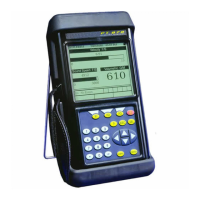
